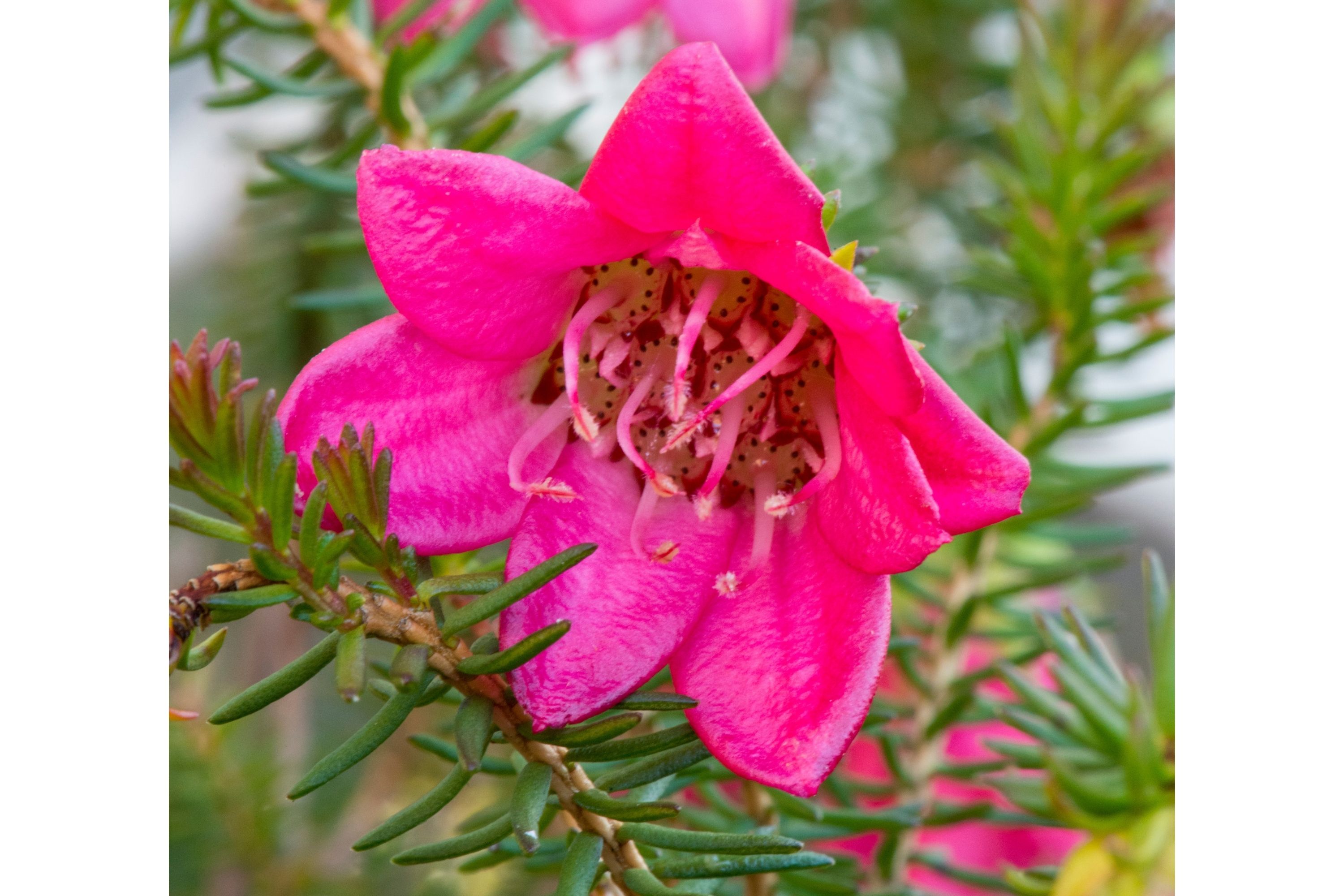Darwinia taxifolia
(Darwinia taxifolia)

Description
Darwinia taxifolia is a shrub which is endemic to New South Wales in Australia. It has an erect or decumbent habit, growing up to 1 metre high. Pink or purple-red flowers are produced in clusters of 2 to 4 between spring and early summer. The species was first formally described by botanist Allan Cunningham in Geographical Memoirs on New South Wales in 1825, based on plant material collected from rocky areas of the Blue Mountains. There are two subspecies which are currently recognised: D. taxifolia A.Cunn.subsp.taxifolia D. taxifolia subsp. macrolaena B.G.Briggs Darwinia, sometimes commonly known as mountain bells or simply bells, is a genus of about 70 species of evergreen shrubs in the family Myrtaceae, endemic to southeastern and southwestern Australia. The majority are native to southern Western Australia, but a few species occur in South Australia, New South Wales and Victoria. The genus was named in honour of Erasmus Darwin, grandfather of Charles Darwin by Edward Rudge in 1816. Most darwinias grow to a height of between 0.2 and 3 m (0.7 and 10 ft), and many are prostrate shrubs. Most have small, simple leaves and the flowers are often grouped together, each flower with five red, white or greenish petals and ten stamens. In many species, the flowers are surrounded by large, colourful bracts, giving rise to their common names. Darwinia species are prostrate to erect, woody shrubs growing to a height of 0.2 and 3 m (0.7 and 10 ft). The leaves are usually arranged in opposite pairs and are simple, small, needle-like to oval and contain essential oils. The flowers are arranged near the ends of the branches and are usually surrounded by leaf-like green bracts and larger, usually coloured bracteoles. The flowers have five, usually very small sepals and 5 petals which enclose the stamens and may be white or coloured. There are 10 stamens which alternate with 10 staminodes, all of which are enclosed by the petals so that they are not visible in an intact flower. The style projects beyond the flower and has a groups of hairs near the stigma. The fruit is a non-fleshy nut which retains the (usually one) seed at maturity. Darwinias are found in New South Wales, Victoria, South Australia and Western Australia. Sixty of the roughly 70 species occur in Western Australia and 11 grow naturally in New South Wales.
Taxonomic tree:







